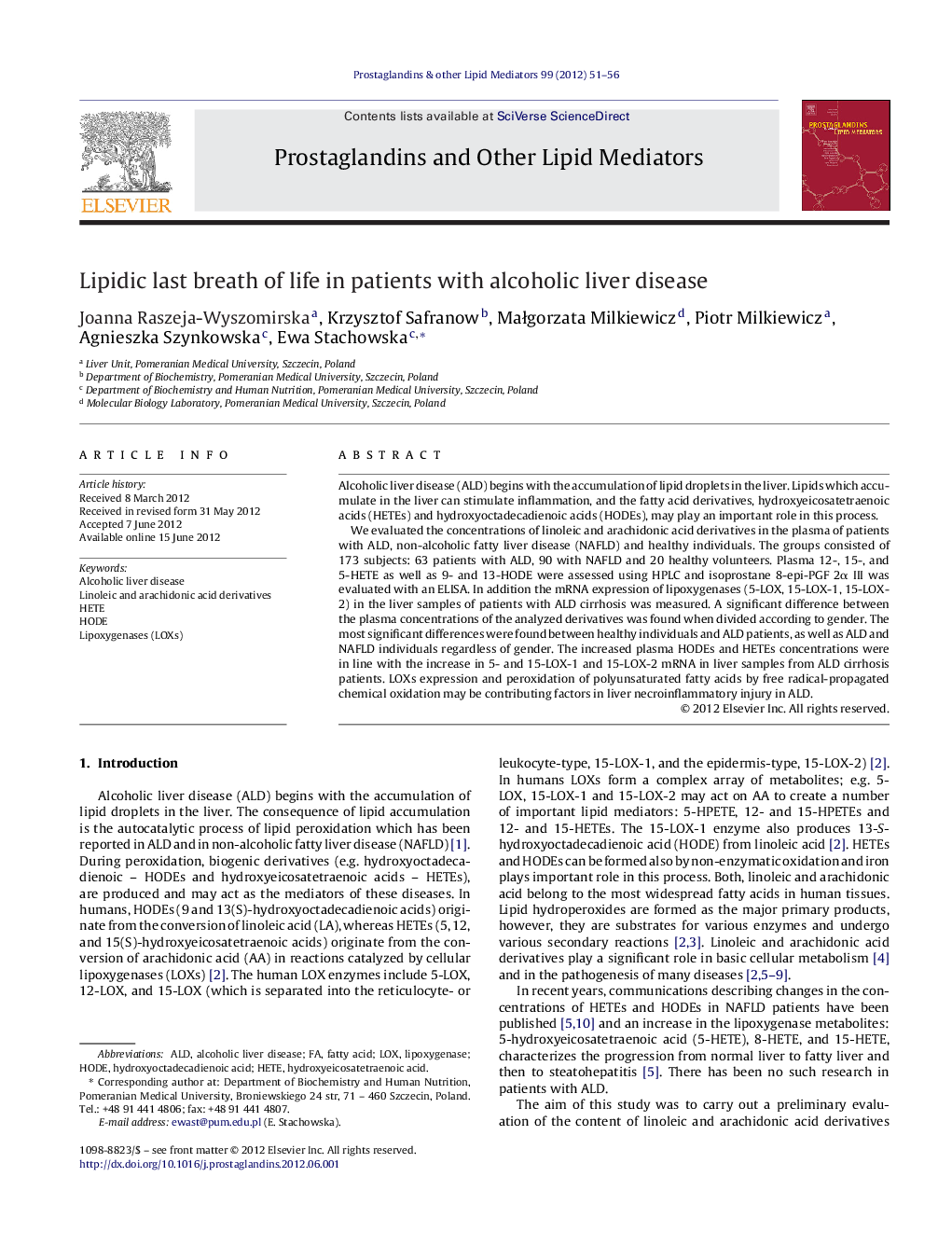| Article ID | Journal | Published Year | Pages | File Type |
|---|---|---|---|---|
| 2019774 | Prostaglandins & Other Lipid Mediators | 2012 | 6 Pages |
Alcoholic liver disease (ALD) begins with the accumulation of lipid droplets in the liver. Lipids which accumulate in the liver can stimulate inflammation, and the fatty acid derivatives, hydroxyeicosatetraenoic acids (HETEs) and hydroxyoctadecadienoic acids (HODEs), may play an important role in this process.We evaluated the concentrations of linoleic and arachidonic acid derivatives in the plasma of patients with ALD, non-alcoholic fatty liver disease (NAFLD) and healthy individuals. The groups consisted of 173 subjects: 63 patients with ALD, 90 with NAFLD and 20 healthy volunteers. Plasma 12-, 15-, and 5-HETE as well as 9- and 13-HODE were assessed using HPLC and isoprostane 8-epi-PGF 2α III was evaluated with an ELISA. In addition the mRNA expression of lipoxygenases (5-LOX, 15-LOX-1, 15-LOX-2) in the liver samples of patients with ALD cirrhosis was measured. A significant difference between the plasma concentrations of the analyzed derivatives was found when divided according to gender. The most significant differences were found between healthy individuals and ALD patients, as well as ALD and NAFLD individuals regardless of gender. The increased plasma HODEs and HETEs concentrations were in line with the increase in 5- and 15-LOX-1 and 15-LOX-2 mRNA in liver samples from ALD cirrhosis patients. LOXs expression and peroxidation of polyunsaturated fatty acids by free radical-propagated chemical oxidation may be contributing factors in liver necroinflammatory injury in ALD.
► We compared changes of lipid derivatives in two fatty liver diseases: alcoholic and nonalcoholic fatty liver disease (ALD vs NAFLD). ► We examine changes in the level of proinflammatory process in ALD and NAFLD. ► Increasing information will increase knowledge about ALD and differences between ALD and NAFLD.
